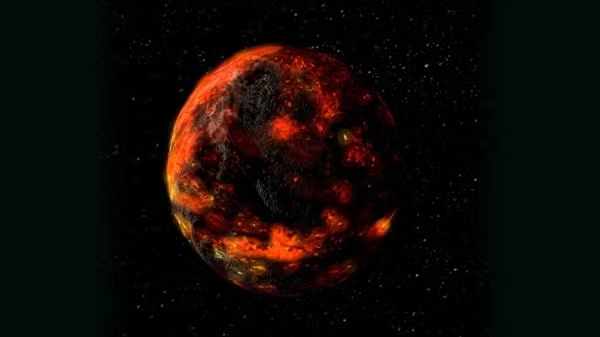Geological sciences PhD grad driven by desire to continue learning

May 2020 grad Chadlin Ostrander. Photo credit: Floyd Kendall
Editor's note: This story is part of a series of profiles of notable spring 2020 graduates.
According to Chadlin Ostrander, who is graduating this spring with a PhD in geological sciences from Arizona State University's School of Earth and Space Exploration, mastering his field has been a process motivated not by a natural aptitude for science, but rather a drive to continue learning.
A new year’s resolution to read books by Carl Sagan and a high school geology teacher in his hometown of Klamath Falls, Oregon, planted the seed.
After a stint in the Marine Corps and a relocation to Phoenix for his wife’s career, Ostrander landed at the School of Earth and Space Exploration.
First, he earned a bachelor’s degree in geological sciences and worked in Professor Ariel Anbar’s lab. Then, he was awarded a National Science Foundation graduate research fellowship and stayed at ASU to pursue a doctoral degree.
He continued his work in Anbar’s lab. And with some important guides along the way, ultimately turned himself from passionate soldier into a full-fledged scientist.
Question: What was your “aha” moment, when you realized you wanted to study the field you majored in?
Answer: When it comes to geochemistry, I didn’t really experience an “aha” moment. Instead, I would characterize it as an “aha” period. It wasn’t until after I spent a few years doing mostly menial tasks in Ariel Anbar’s lab, at best only flirting with the idea of actual research, that the geochemistry studied in his lab really started to wear off on me. If I’m being candid, part of this delay was simply due to the difficulties I faced in learning the geochemistry. I did not have a strong science background when I arrived at ASU.
Q: What’s something you learned while at ASU — in the classroom or otherwise — that surprised you or changed your perspective?
A: My wife gave birth to our two children during my PhD studies. Their arrivals reminded me what is important in life — and what can wait until tomorrow.
Q: Why did you choose ASU?
A: When I completed my bachelor’s degree at ASU, I had already made a lot of research progress in Ariel Anbar’s lab. This head start seemed extremely beneficial. Moreover, although I had to say “no” to other advisers in other programs in order to stay at ASU, I was still lucky enough to collaborate with most of them on research projects that appeared in my dissertation.
Q: Which professor taught you the most important lesson while at ASU?
A: I really benefited from the science communication lessons taught by Christy Till. Science loses a lot of its value if it cannot be effectively shared. At the least, scientists in other fields should be able to comprehend your research. Being able to share your research with the general public is even better.
Q: What’s the best piece of advice you’d give to those still in school?
A: Enjoy this. It should be fun. If this is not fun, you’re doing something wrong.
Q: What was your favorite spot on campus, whether for studying, meeting friends or just thinking about life?
A: This may be cheating a little bit, but I’m going to say Devil’s Advocate (a local watering hole just east of campus). This was a common location for celebrations, catching up with good friends, and, perhaps most importantly, cheap food and beer.
Q: What are your plans after graduation?
A: I have accepted a postdoctoral scholar position at Woods Hole Oceanographic Institution on Cape Cod.
Q: If someone gave you $40 million to solve one problem on our planet, what would you tackle?
A: The Cleveland Indians need to win a World Series. Forty million dollars could net a productive outfielder, a mid- to back-end starter and some much-needed bullpen help.
This article was written by William Kennedy
More Science and technology

Compact X-ray laser lab aims to reveal deep secrets of life, matter and energy
X-rays allow us to view inside the human body to diagnose broken bones and other hidden problems. More recent X-ray advances are…

Apollo lunar samples enable ASU researcher to pinpoint moon’s crystallization timeline
A team of researchers, including Arizona State University geochemist Melanie Barboni, in collaboration with scientists from The…

NASA launches space telescope to chart the sky and millions of galaxies
California’s Vandenberg Space Force Base was the site for Tuesday’s 8:10 p.m. launch of the NASA SPHEREx mission aboard a SpaceX…

